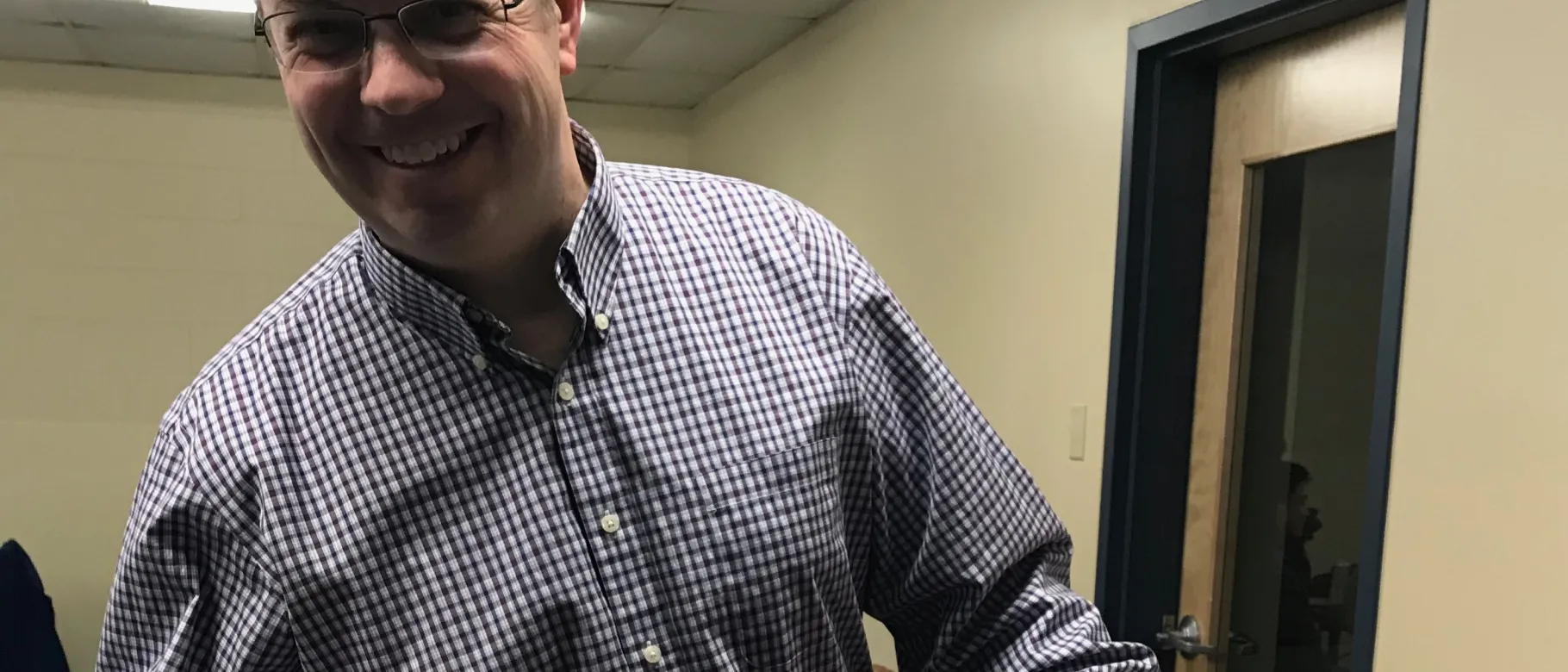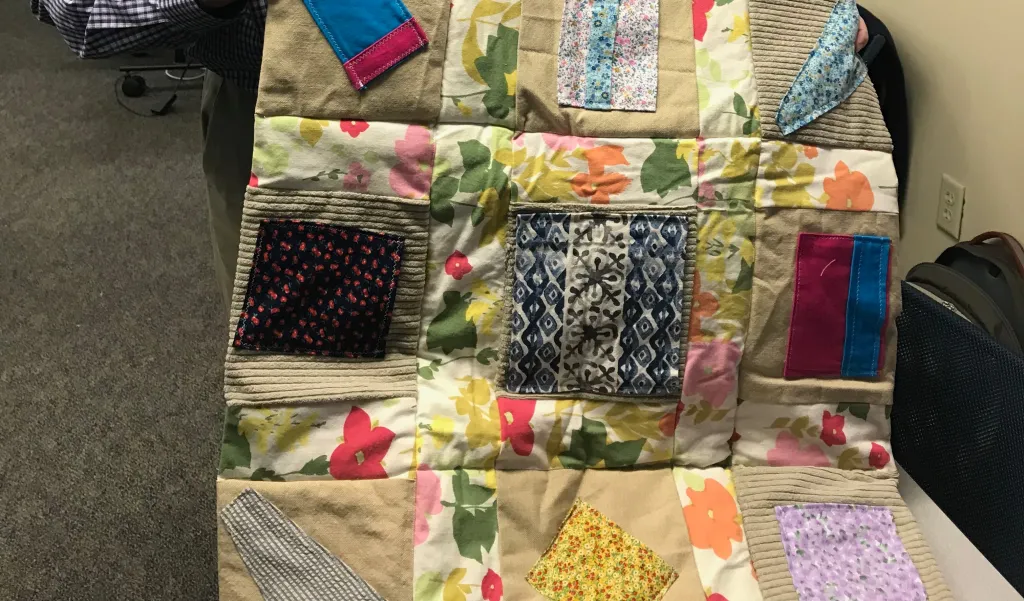Physician Assistant student creates quilt to stimulate senses and connect with patients

Physician Assistant students in the Interdisciplinary Geriatric Education Program (IGEP) were asked to research ways to stimulate the different senses in older adults with dementia.
The students gathered a variety of items to connect patients to their senses including wedding pictures, photos of locations in Maine, sea glass, essential oils and a quilt.
William McNamara (Physician Assistant, ’20) arrived at the idea of making a quilt while researching activity blankets and lap quilts.
“I made a small quilt when my daughter was born, so I thought this would be within my capabilities,” McNamara explained. “On one of my weekend trips home, I rummaged through my wife’s fabric boxes and collected a pile of fabrics with many different textures and colors.”
McNamara made a small quilt using soft fleece, rough burlap and bumpy corduroy.
“Running your hand over the surface of it created a whole range of sensations,” he said.
Each of the nine squares on the quilt had a pocket sewn on the outside so that McNamara could fill it will small tactile items to be discovered by his patients.
Part of the IGEP class includes hands-on experience working in the community with older adults, known as Elder Teachers. Using the quilt and the other items, students learned the benefits of sensory stimulation in making a connection with older adults with dementia.
“The process was a great practical exercise in research and with the hands-on application of trying to make a connection with your patients,” McNamara stated. “Interacting with my Elder Teachers was the highlight of my didactic year at UNE.”
